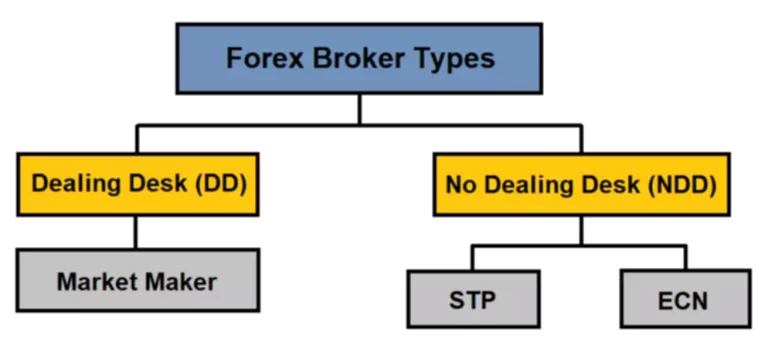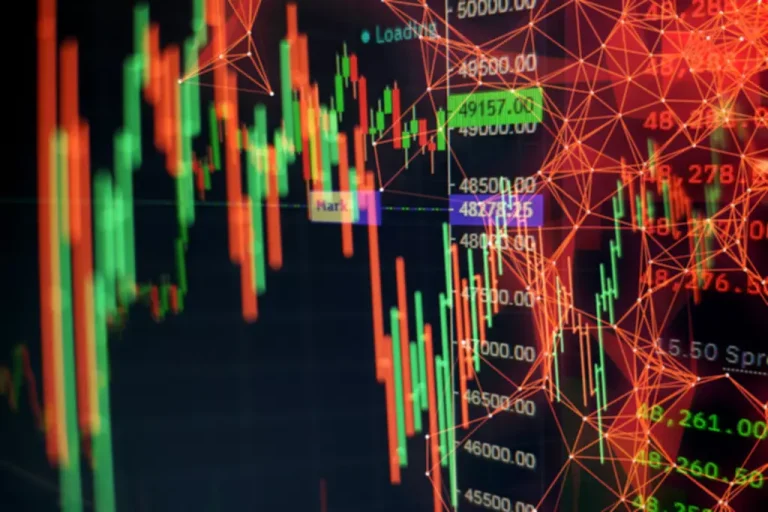Content
Exchange-traded derivatives are traded worldwide in different stock exchanges and come in many Prime Brokerage types. Standardisation – Each ETD’s contract has a specified expiration date, defined settlement process and lot size. The stock exchange establishes all these and other rules and regulations, resulting in consistency that eliminates any difficulties for market participants and the exchange regarding contract customisation. High liquidity also makes it easier for investors to find other parties to sell to or make bets against.

Overview of Exchange Traded Derivatives
Exchange-traded derivatives have standardized contracts with a transparent price, which enables them to be bought and sold easily. Investors can take advantage of the liquidity by offsetting their contracts when https://www.xcritical.com/ needed. They can do so by selling the current position out in the market or buying another position in the opposite direction. However, some of the contracts, including options and futures, are traded on specialized exchanges.

The complete suite of derivative markets
This is because all derivatives involve putting up a smaller amount initially in order to open a larger position, rather than paying the full amount of an asset upfront as you would with investing. When you trade CFDs, you’re entering into a contract for difference, which is an agreement to exchange the difference between the opening and closing price of your position. They offer greater flexibility in terms of contract customisation, allowing counterparties to tailor the terms to their specific needs. As the name implies, ETDs are traded on a regulated exchange and are subjected to etd meaning market and authority regulations. Exchange-traded derivatives (ETDs) and Over-the-counter (OTC) derivatives are two types of derivatives.
Why Are Exchange Traded Derivatives Appealing to Investors?
Bucket shops, outlawed in 1936 in the US, are a more recent historical example. As product offerings grow and pricing improves, exchange-traded derivatives are increasingly appealing to both corporate and institutional buyers of derivatives contracts. StoneX Financial Inc. (“SFI”) is a member of FINRA/NFA/SIPC and registered with the MSRB. Securities and Exchange Commission (“SEC”) as a Broker-Dealer and with the CFTC as a Futures Commission Merchant and Commodity Trading Advisor.
Economic function of the derivative market
- The information about ETD prices and volumes is public, which means a high level of transparency that facilitates market efficiency.
- This arrangement helps to mitigate counterparty risk by ensuring that both parties fulfil their obligations.
- You think the price of Brent Crude may go down, so you want to hedge your oil shares with us using CFDs.
- The OTC derivative market comprises of informal participants, the backbone of typical dealer banks such as JP Morgan Chase.
- Commodities markets were initially used to hedge risks but have recently become highly speculative.
- Trading in exchange derivatives may occur in physical OPEN OUTCRY form, or increasingly in electronic form.
- Please ensure you understand how this product works and whether you can afford to take the high risk of losing money.
Say you want to speculate on the price of the Nasdaq (known on our platform as the US Tech 100). Whether the contracts are settled with physical delivery or by cash payments from one party to another depends on the terms of the contract. CFDs are also a form of derivative as they track the price of an underlying market. The ETD module interacts with the Margin Maintenance sub-system forthe purpose of resolving money settlements arising due to the variousevents processed in the ETD module.
Contrary to a future, a forward or an option, the notional amount is usually not exchanged between counterparties. Consequently, swaps can be in cash or collateral.Swaps can be used to hedge certain risks such as interest rate risk, or to speculate on changes in the expected direction of underlying prices. Inverse exchange-traded funds (IETFs) and leveraged exchange-traded funds (LETFs)[33] are two special types of exchange traded funds (ETFs) that are available to common traders and investors on major exchanges like the NYSE and Nasdaq.

In contrast, exchange trading takes place in a centralized order book and on a multilateral basis, i.e., all buyers and sellers interact with each other at the same time akin to a many-to-many model as seen in Exhibit 1. Derivatives are often subject to the following criticisms; particularly since the 2007–2008 financial crisis, the discipline of Risk management has developed attempting to address the below and other risks – see Financial risk management § Banking. The shares of subprime MBSs issued by various structures, such as CMOs, are not identical but rather issued as tranches (French for „slices”), each with a different level of priority in the debt repayment stream, giving them different levels of risk and reward. This decrease in face value is measured by the MBS’s „factor”, the percentage of the original „face” that remains to be repaid. What is more likely, Telpner says, is that derivatives will be redefined in a way that brings them more directly under the regulatory remit of the SEC or CFTC.
Data delivery is customizable; customers can access data through intra-day and/or end-of-day files through ICE Data Services’ APEX, an advanced delivery platform for pricing, analytics and reference data. The end-of-day file contains key security updates and new security setups to help prepare for the next trading session. Streamline and expedite the ETD allocations process, with flexible calculations and real time communication between clients and brokers to ensure timely confirmation and accurate booking. Send and receive the give-ups and give-ins that enable triparty workflows between executing brokers, clearing brokers and clients providing end-to-end visibility of each trade.
Depending on the direction of your trade and the market movement, you’ll make a profit or incur a loss. With derivatives, you can trade both rising and falling markets, meaning you can profit (or make a loss) even in a depressed or volatile economic environment. You’d go ‘long’ if you think the price of an underlying asset will rise; and ‘short’ if you think it’s going to fall. The standardization also ensures clearing (verification of transaction and identities) and settlement (transfer of money) of derivatives contracts happens efficiently and allows for the provision of a credit guarantee by the clearinghouse. The clearinghouse can provide this guarantee through the requirement of a cash deposit called a margin bond or performance bond.
The options market has seen remarkable growth since the first standardized contract was traded in 1973. A futures contract is merely a contract specifying that a buyer purchases or a seller sells an underlying asset at a specified quantity, price, and date in the future. Futures are used by both hedgers and speculators to protect against or to profit from price fluctuations of the underlying asset in the future. Another defining characteristic of exchange-traded derivatives is their mark-to-market feature, wherein gains and losses on every derivative contract are calculated on a daily basis.
Interestingly, currency derivatives also allow for investors to access certain FX markets that may be closed to outsiders or where forward FX trading is banned. These derivatives, called non-deliverable forwards (NDF), are traded offshore and settle in a freely-traded currency, mostly USD. Derivatives are often used by margin traders, especially in foreign exchange trading, since it would be incredibly capital-intensive to fund purchases and sales of the actual currencies. Another example would be cryptocurrencies, where the sky-high price of Bitcoin makes it very expensive to buy.
A closely related contract is a futures contract; they differ in certain respects. However, being traded over the counter (OTC), forward contracts specification can be customized and may include mark-to-market and daily margin calls. Some of the more common derivatives include forwards, futures, options, swaps, and variations of these such as synthetic collateralized debt obligations and credit default swaps. Most derivatives are traded over-the-counter (off-exchange) or on an exchange such as the Chicago Mercantile Exchange, while most insurance contracts have developed into a separate industry. In the United States, after the 2007–2008 financial crisis, there has been increased pressure to move derivatives to trade on exchanges.
ETDs are traded on most exchanges, such as the Bombay Stock Exchange, CME, or the Intercontinental Exchange (ICE), and can bring you good returns if you implement good trading strategies. ETDs might be less risky than OTCs due to standardisation, reduced counterparty risks and better market accessibility. However, for successful trading, you must have a profound knowledge of the trends in the financial markets and define your investment objectives. Commodities are widely used for derivative trading in most countries, with the first derivative exchange being the Chicago Board of Trade.
The exchange has standardized terms and specifications for each derivative contract, making it easy for the investor to determine how many contracts can be bought or sold. Each individual contract is also of a size that is not daunting for the small investor. Unlike their over-the-counter cousins, exchange-traded derivatives can be well suited for some retail investors.
At the same time, OTCs face varying levels of oversight, potentially leading to inconsistencies and risks due to a lack of consistent regulation. ETD contracts are available for both retail investors and big investment organisations. They can be bought and sold on a regulated brokerage, so many traders and investors can easily get them. Tamta is a content writer based in Georgia with five years of experience covering global financial and crypto markets for news outlets, blockchain companies, and crypto businesses. With a background in higher education and a personal interest in crypto investing, she specializes in breaking down complex concepts into easy-to-understand information for new crypto investors.
